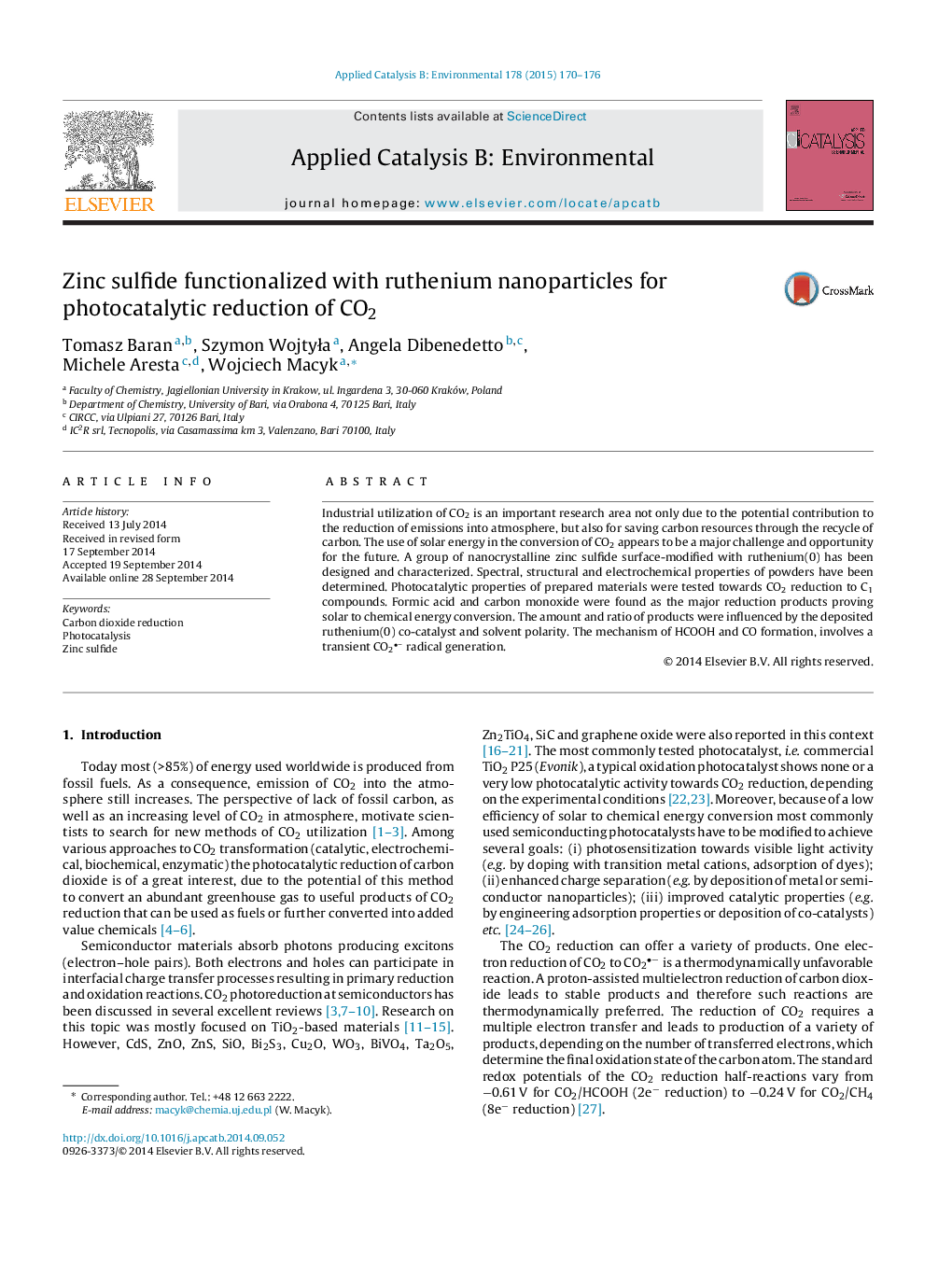| کد مقاله | کد نشریه | سال انتشار | مقاله انگلیسی | نسخه تمام متن |
|---|---|---|---|---|
| 44956 | 46386 | 2015 | 7 صفحه PDF | دانلود رایگان |

• Zinc sulfide with deposited ruthenium nanoparticles photocatalyzes CO2 reduction.
• Two-electron reduction leads predominantly to production of formate and CO.
• In aqueous media formate is produced almost exclusively.
• The mechanism of reduction encompasses photogeneration of CO2
• –.
Industrial utilization of CO2 is an important research area not only due to the potential contribution to the reduction of emissions into atmosphere, but also for saving carbon resources through the recycle of carbon. The use of solar energy in the conversion of CO2 appears to be a major challenge and opportunity for the future. A group of nanocrystalline zinc sulfide surface-modified with ruthenium(0) has been designed and characterized. Spectral, structural and electrochemical properties of powders have been determined. Photocatalytic properties of prepared materials were tested towards CO2 reduction to C1 compounds. Formic acid and carbon monoxide were found as the major reduction products proving solar to chemical energy conversion. The amount and ratio of products were influenced by the deposited ruthenium(0) co-catalyst and solvent polarity. The mechanism of HCOOH and CO formation, involves a transient CO2
• – radical generation.
Figure optionsDownload as PowerPoint slide
Journal: Applied Catalysis B: Environmental - Volume 178, November 2015, Pages 170–176